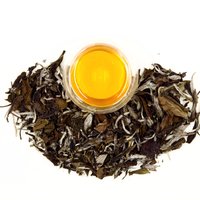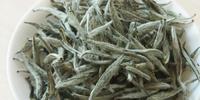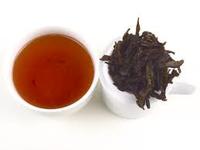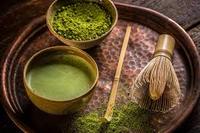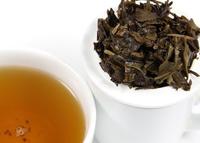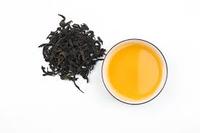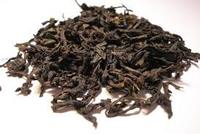| Unknown | Bai Mudan | Physical object | White Tea |
|
|
Type:Physical object Subject:White Tea |
Description:It is a type of white tea made from plucks each with one leaf shoot and two immediate young leaves of the camelia sinensis plant. Bai Mudan is sometimes preferred by white tea drinkers for its fuller flavor and greater potency than the other major type of white tea, Bai Hao Yinzhen. The latter is made purely with leaf shoots, and so it is comparatively softer and more subtle. The typical taste of Bai Mudan is a result of both the processing and the tea plant cultivars employed in the production. [show more]
|
|
| Unknown | Baihao Yinzhen | Physical object | White Tea |
|
|
Type:Physical object Subject:White Tea |
Description:Also known as White Hair Silver Needle, is a white tea produced in Fujian Province in China. Silver Needle or Bai Hao Yin Zhen or usually just Yin Zhen is the Chinese type of white tea. Amongst white teas, this is the most expensive variety and the most prized, as only top buds (leaf shoots) of the camelia sinensis plant are used to produce the tea. Genuine Silver Needles are made from cultivars of the Da Bai (Large White) tea tree family. There are other productions that look similar with downy leaf shoots but most are green teas, and as green teas, they taste differently and have a different biochemical potency than the genuine white tea Silver Needle.It is commonly included among China's famous teas. [show more]
|
|
| Unknown | Da Hong Pao | Physical Object | Dark oolong tea |
|
|
Type:Physical Object Subject:Dark oolong tea |
Description:Da Hong Pao (Big Red Robe) is a Wuyi rock tea grown in the Wuyi Mountains. It is a heavily oxidized, dark oolong tea.
According to legend, the mother of a Ming dynasty emperor was cured of an illness by a certain tea, and that emperor sent great red robes to clothe the four bushes from which that batch of tea originated. Six of the original bushes,[not in citation given] growing on a rock on the Wuyi Mountains and reportedly dating back to the Song dynasty, still survive today and are highly venerated. [show more]
|
|
| Unknown | Fermented tea | Physical Object | Black tea |
|
|
Type:Physical Object Subject:Black tea |
Description:Fermented tea (also known as post-fermented tea or dark tea) is a class of tea that has undergone microbial fermentation, from several months to many years. The exposure of the tea leaves to humidity and oxygen during the process also causes endo-oxidation (derived from the tea-leaf enzymes themselves) and exo-oxidation (which is microbially catalysed). The tea leaves and the liquor made from them become darker with oxidation. Thus, the various kinds of fermented teas produced across China are also referred to as dark tea, not be confused with black tea.
The fermentation of tea leaves alters their chemistry, affecting the organoleptic qualities of the tea made from them. Fermentation affects the smell of the tea and typically mellows its taste, reducing astringency and bitterness while improving mouthfeel and aftertaste. The microbes may also produce metabolites with health benefits. [show more]
|
|
| Unknown | Matcha | Physical object | Green tea |
|
|
Type:Physical object Subject:Green tea |
Description:It is finely ground powder of specially grown and processed green tea leaves. It is special in two aspects of farming and processing: the green tea plants for matcha are shade-grown for about three weeks before harvest and the stems and veins are removed in processing. During shaded growth, the plant Camellia sinensis produces more theanine and caffeine. The powdered form of matcha is consumed differently from tea leaves or tea bags, and is suspended in a liquid, typically water or milk. China during the Tang Dynasty (618–907), tea leaves were steamed and formed into tea bricks for storage and trade. The tea was prepared by roasting and pulverizing the tea, and decocting the resulting tea powder in hot water, then adding salt.During the Song Dynasty (960–1279), the method of making powdered tea from steam-prepared dried tea leaves, and preparing the beverage by whipping the tea powder and hot water together in a bowl became popular. [show more]
|
|
| Unknown | Shou Mei Tea | Physical Object | White Tea |
|
|
Type:Physical Object Subject:White Tea |
Description:Shoumei tea is a white tea that is produced from naturally withered upper leaf and tips, with a stronger flavor reminiscent of lighter oolong teas. It is mostly grown in Fujian Province and Guangxi Province in China. Because it is plucked later than Bai Mudan, the tea may be darker in color, but it should still have a proportionate green color. Some lower grades of Shou Mei may be golden in color with a lot of black and red leaves, making a darker brew with more depth.
Technically this tea, being a fourth grade tea, is a by-product of Baihao Yinzhen tea production and uses Da Bai or Large White leaves. [show more]
|
|
| Unknown | Shui Jin Gui | Physical Object | Oolong tea |
|
|
Type:Physical Object Subject:Oolong tea |
Description:Shui Jin Gui (水金龟) is one of Wuyi's four famous tea bushes called Si Da Ming Cong. Shui Jin Gui literally means "golden marine turtle". Other common names are: Golden Turtle or Golden Water Turtle. The tea gives a fresh and fruity aroma and the liquor is pale green. [show more]
|
|
| Unknown | Wuyi tea | Physical Object | black and oolong tea |
|
|
Type:Physical Object Subject:black and oolong tea |
Description:Wuyi tea, formerly known by the trade name "Bohea" in English, is a category of black and oolong teas grown in the Wuyi Mountains of northern Fujian, China. The Wuyi region produces a number of well-known teas, including Lapsang souchong and Da Hong Pao. It has historically been one of the major centers of tea production in Fujian province and globally. Both black tea (excluding brick tea) and oolong tea were likely invented in the Wuyi region, which continues to produce both styles today. [show more]
|
|
| LockCha Tea House | LockCha Tea House | Restaurant | Calligraphy
Dim Sum
Tea Ceremony
Tea Culture
Tea Leaves
Tea Museum
Tea Ware |
|
|
Type:Restaurant Subject:Calligraphy
Dim Sum
Tea Ceremony
Tea Culture
Tea Leaves
Tea Museum
Tea Ware |
Description:The LockCha Tea House provides an elegant place for tea in the heart of downtown Hong Kong. Whether you are a tea lover or not, you will be captivated by its soothing atmosphere and cultured environment. Aimed at reviving the traditional canton-style teahouses, the LockCha Tea House provides not only a selection of more than a hundred teas but also a vegetarian dim sum that are made fresh daily. In essence, the LockCha Tea House is a perfect place to relax during lunch, after work, dinner, or just anytime.
Besides lunch and dinner, the LockCha Tea House has become a cultural hub for many. Since 2001, the Sunday Music Programme has become an instant success! A Cantonese Music Programme has been added in 2008 and it now runs every Saturday night. The newest programme, “Tea and Life - Cultural Salon”, runs every month and is the most popular programme yet! The Teahouse also hosts tea and calligraphy classes during weekdays. Please pay a visit at any time for a one-of-a-kind tea experience! [show more]
|
|
| Teapot with special shape | Teapot with special shape | Special tea pots | Teapot encased in pewter in hexagonal shape |
|
|
Type:Special tea pots Subject:Teapot encased in pewter in hexagonal shape |
Description:This is a teapot which is made in hexagonal shape, which is unusual in ancient China.
|
|
